Hi all! Please see attached my virtual symposium. It outlines the 5 key takeaways from this course and how I can apply them in my real world library job. Enjoy!
Inspiration Report: Infinite Learning
I chose to dive into the infinite learning inspiration report. I was inspired by my current library where we offer a few homestead programs to the public and know that people enjoy them. Within this report, you’ll find reasons why a modern homesteading program designed for the library users will help to build the community and help people connect with others like them. Enjoy!
Inspiration Report: Infinite Learning – Modern Homesteading Series in Public Libraries
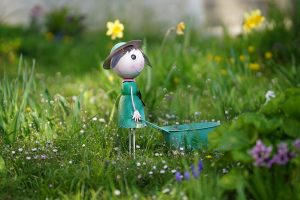
Reflection: Library as a Classroom
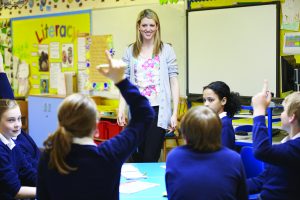
I chose to look through the Infinite Learning: Library as a Classroom for my final reflection blog. The reason why I chose Library as a Classroom is because I feel strongly about how similar librarians are to teachers. If you remember from my introduction, I was a teacher for six years. When I left the classroom, I had no idea where I’d end up but eventually found myself at the local public library in my town. There are so many similarities to teaching that I almost feel as though I have not left the classroom.
The common theme throughout all of the articles is that librarians are here to facilitate learning opportunities which I wholly believe. When I was hired, I was hired as a program specialist for the Youth Services Department specifically focusing on tweens. This age is categorized as ages 8-12. When I began to plan my programs, I wanted to focus on how I could educate people while simultaneously making sure that they were excited to come to the library.
I used to teach math and science so STEM is something that I am passionate about. I gave my boss a structured program proposal in January 2022 and she loved the way that I laid out my programs. Each month, I rotate through different school subjects in order to tap into different learning styles and interests. The first week of the month, I do programs that are based around crafting, art, and home economics. A majority of the time we are creating with different materials (paint, oil pastels, glue and beads, sewing, etc.) which helps tweens discover things that they are interested in or work on the skills they already have. In the article “Embracing Messy Learning”, the author states that he is slowly learning to embrace the struggles that students experience as they engage (Block, 2014). I found this so important because something that I have had to learn to do is back away and allow children to forge their own path. Sometimes, when making things creatively, we have to allow them the space so that they can create something that is authentically theirs.
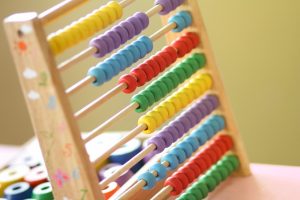
The second week of the month, I design a program that is based around STEM. We have done things such as creating a switch, making soap from scratch, as well as creating robots with motors! When thinking about my time as a classroom teacher versus a librarian, there are some contrasts. Whenever I taught science in the classroom, there was always a curriculum that I had to follow. There was little room for creativity and free play. Designing these programs at my library gives me a lot of freedom and in turn, gives the children independence. Patrons often leave discussing how they have never done something like this before and how exciting it was for them.
The third week of the month is designed for families and we do a combination of crafting, reading, and STEM activities. These programs are large and I create stations. At these stations, there are different art activities like creating scenes (usually themed around an important holiday that month or theme) with stickers, a sensory bin, building blocks, etc. I began family night after 6 months of tween programming because families wanted similar activities for their younger and older children.
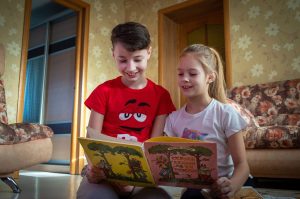
The last week of the month is designed for reading. I began it as a book club where we read one book and discussed it. I would bring snacks that were themed around the books and we would hold discussions. I noticed that within a few months of doing this, the tweens were becoming disinterested. I adapted it to fit the needs of the patrons and we now bring books that we are reading and talk about them. This has afforded tweens opportunities to make connections and it encourages their own reading without unintentionally making the program inaccessible if the book we chose was not on their level.
Overall, this entire unit had me reflecting on my own experiences with using the library as a classroom and my past experiences as a teacher. In the Huffpost, author Jordan Bookey talks about how libraries serve as a place that allows children to play free and reinforces that play is literacy (Bookey, 2015). I oftentimes find myself reflecting on how similar but different teaching and librarianship are. Similar because I work with children of a similar age and try to create programs that are aligned with their interests. Different because there is no grading papers, no parent contact, and no real measurement of ‘success’ other than feedback forms. Overall, I am happy to have my background experience as a teacher. I think that it has really helped me to transition to the library world.
References:
Block, J. (2014, January 7). Embracing messy learning. Edutopia. https://www.edutopia.org/blog/embracing-messy-learning-joshua-block
Bookey, J. L. (2017, December 7). 8 awesome ways libraries are making learning fun. HuffPost. https://www.huffpost.com/entry/8-awesome-ways-libraries_b_7157462
Reflection: The Power of Stories
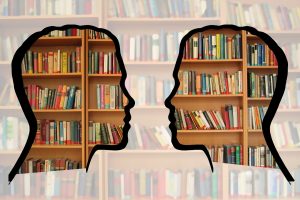
The module ‘Power of Stories’ hits home for me. There is a happiness that I find in connecting with people from all different backgrounds and places. I try to find something in common with all patrons that I talk to. Looking through the module, something that I notice Professor Stephens points out right away is that “the underserved and the invisible should feel welcome and encouraged in our spaces” (Stephens, 2024). I completely agree with this. I oftentime notice that patrons who are new to the library can seem awkward because they are not comfortable (yet!). This is the perfect opportunity for me to strike up a conversation to make sure that they know this is a safe place. I love to ask questions about what they are interested in finding or complimenting a piece of jewelry or clothing that they are wearing. This seems to ease people into conversation and before you know it, we are friendly enough to say hello outside of the library.
I think that learning about cultural humility and competence in Professor Houde’s class has helped me to understand how to better deal with people in a public setting. The ‘Power of Stories’ module touches on both humility and competence while comparing and contrasting the ideas but I truly believe that these concepts go hand in hand. Something that I learned from Houde in 275 is that you must be aware of your own bias and prejudices before you can be culturally competent and practice cultural humility. I agree with this completely. Understanding that every single person who walks through the library doors has lived a different life and experienced different experiences is going to make my job that much easier. I have the knowledge in my brain to understand that thus far, I have lived a very privileged life. I have not had to deal with things that other people have and I can’t even pretend to try to understand some situations. It just isn’t possible! With that being said, although I have not lived it, I can practice competence but understanding that I am always going to be able to learn from other peoples stories and offering them support if possible. I also like to think that I exhibit cultural humility by reflecting and having an attitude that is not all knowing and powerful.
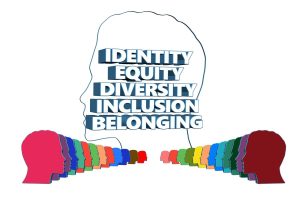
I also really quite enjoyed the video of ‘The Power of Stories’ by Kylie and Felicity. I think that it is so important to understand that stories can be told without words. Actions, behaviors, art, sensory experiences, etc. can all contribute to a story. Not a word in sight! I especially think this is important because I have a special education background and it is such a hard concept to explain to people that just don’t get it. There are many people that I ran into during my public school education jobs where people think that non-verbal = not understanding. This is especially shocking when you consider that these are people who work daily with the students. A lot of time I found that my nonverbal students were extremely intelligent and just had difficulty with communication because they had not been given the proper tools. When I was in college, I met an adult man who only had mobility in his knee. He used a button to communicate and the way that he moved his knee changed the output for his communication. He was able to communicate that he was hungry, bored, had to use the restroom, needed something, etc. and I thought it was absolutely fascinating to be able to connect with him as he otherwise would not be able to communicate.
Lastly, I think it is important to understand inclusive practices and communication especially in libraries. People and technology are adapting faster than we can keep up with but I believe that in order for libraries to be inclusive to all users, we must have inclusive practices. This includes allowing children access to programs in non-traditional ways, no questions asked.

Reflection: New Horizons
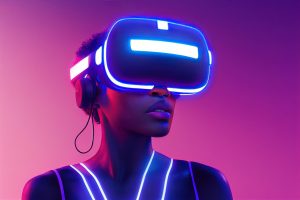
Wow! Going through this module was simultaneously a blast from the blast and a look into the future. Just to make a personal connection, right away while watching the lecture, I noticed that Professor Stephens mentioned a learning module that I am familiar with. This was the “Flipped Classroom Module”. I went to college in 2011-2015 for education and it felt brand new to me in 2011. I was still learning about the flipped classroom in 2015 and applied it when I began my teaching career in 2015. This was something that was different for students but they were willing to learn. It was not my favorite style of teaching so when it was no longer required, I switched methods, but it was fun to make this connection.
Another really interesting piece that I pulled from this module was the HoloLens 2. I think that the feelings I have towards to HoloLens is a general feeling of unease and being uncomfortable while also being curious about what it is able to offer to people. I think that I need to get into the mindset that this type of technology is on the horizon and could be incorporated in libraries and technical spaces sooner than I think. Although I haven’t engaged with this type of technology in my real life, I know that Apple has also put out their Apple Vision Pro which I believe attempts to give similar results. I think as of October 30, 2024, the Apple Vision Pro is just a prototype but I know that Apple is working behind the scenes to perfect this technology – potentially even creating something that is more sleek and reasonable to carry around. With that being said, back to the HoloLens. This is a technology that is intelligent and adapts to the user which I think is great but it does pose a question for me. When I see technology like this, I end up thinking of the end scene in Wall-E. Will there be no end and no beginning to the technology? How will users ‘adapt’ to using it? I think those interpretations of technology use leave me feeling unsettled.

On the flip side, I think that if we are using this technology in a responsible way, it is a great tool. When I saw the HoloLens 2, I imagined it in a space such as the library. I am lucky to work in a kids space with children that love exploring new technologies. We have a code club and different tech groups for my programming age (tweens – ages 8-12). I think that this would be really an exciting technology to incorporate – the tweens could play games and to build worlds in it or study with a partner within the library space. As the children grow older (into teenagers), I think it would be a great tool to learn how to utilize for collaborative studying and learning. I did go to the current subreddit and noticed that due to a Microsoft update, there have been errors in usability. I think that those issues will need to be worked out before than can be introduced to environments such as libraries and learning institutions.

Going through this module also has me thinking of many different questions related to technologies. Will libraries have the budgets for them? Will they have the ability to do updates on site or will the technology have to be sent away for updates? Will staff need training? When will staff find the time to be trained? What does the library do if the technology crashes? All of these questions are hypothetical for now, but should be considered seriously if this kind of technology could be introduced.
Overall, I am excited to be on the frontline to the introduction of new technologies but also nervous for the implementation of new technologies. I somewhat experience fear of the unknown until I can learn and I think that is okay and normal. Potentially even expected. Overall, I enjoyed learning about what to expect for emerging technologies, or, technology on the horizon, in order to meet demand for library users.

Innovation Strategy & Roadmap
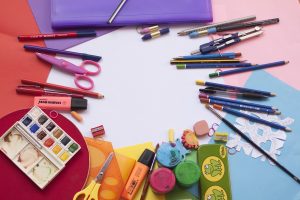
Below you will find my ‘Innovation Strategy & Roadmap’ plan for the Dover Public Library. I was inspired by my past as a teacher and my current work environment today. When I taught, I had a ‘calming corner’ and it was honestly the best part about my classroom. Students felt safe and confident when they went to the corner and when they left it. They understood the rules and expectations and used it as it was intended. I believe that incorporating designated spaces for children and adults who have sensory input difficulties is just best practice in todays world. See my presentation below!
Dover Public Library – Innovation Strategy & Roadmap – Sensory Spaces & Zones
Hyperlinked Environments: Libraries & Museums
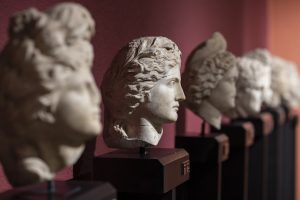
When choosing an adventure for my Hyperlinked Environments post, I opted into focusing on Libraries and Museums. Or, museum like exhibits within libraries. When looking at Kristine Clark’s article “Tacoma’s Museums: Filled with Life, Not Just Objects”, it points out that not only are the objects within the museums are coming to life but the idea of each object holding a memory and how we preserve these memories are of importance as well (Clark, 2018). This past weekend, I had the pleasure of visiting the New York Public Library (NYPL) for the first time as I was there for a night concert and was able to explore during the day. When thinking about Hyperlinked Environments, specifically museums, it is important to note that these environments will be accessible, engaging, and build communities.
Immediately upon walking into the library, I could tell that it was relevant to this assignment elaborating on Hyperlinked Environments based on the exhibits that they were offering in person and online. Although I was able to see it, it was accessible to those that are not within proximity to the library exhibit. I grabbed a brochure which explained what was in the Polonsky Exhibition of The New York Public Library’s Treasures and also how to access digital content if I felt it was necessary. I feel a connection to Clark’s article because there was such a sense of how amazing it truly is that the NYPL has dedicated time, energy, and effort into restoring and preserving these materials so that thousands of people can experience the exhibits day in and day out.
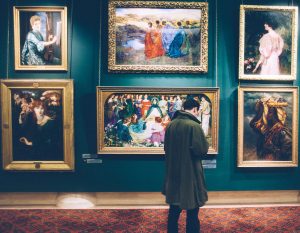
The materials that I saw on display are important to our history in many ways. A real photograph of Martin Luther King Jr. was on display which was just amazing to see in person. I know that MLK Jr. was a real person. I know that he has had a huge impact on society but until Friday, I had only seen images through books and online. Relating it to the University of Melbourne article “How does learning happen in museums?” – a quote from the very first paragraph describes how museums are purposefully designed spaces which mean learning happens “almost accidentally” (Oliveira, Barba, 2018). To see a real black and white photograph with an excerpt about the photographer and MLK Jr. himself from the day he marched was just surreal. It is a hard feeling to explain but so important to understanding the past and the future.
There were other materials and subjects explored such as women’s textiles/work, religious beliefs, and historical events documented. One of my favorite exhibits was the original Winnie the Pooh (also know as Mr. Edward Bear!) and other stuffed animals. I am a big Disney lover and I have never seen these materials in real life. I have also not studied the history of the dolls so it was fun to learn that too. The material was easy to access and easy to understand. It also brought a sense of joy to see these historical dolls on display in such good condition due to the care of the library and archival staff. Here is the audio guide from the NYPL website so you can hear about what I saw at the NYPL.
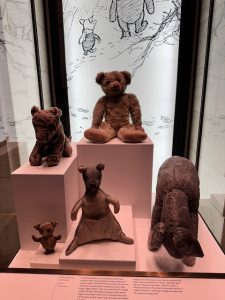
Photo of Winnie-the-Pooh and Friends exhibit, photo by me.
Another exhibit that I enjoyed was The Birds of America; from original drawings by John James Audubon. Audio guide found here. This exhibit was interesting (not pictured, the large book that the art was shown in) because it explained why the author made the art the way he did. In an attempt to make the artwork come to life, he created life size portraits of birds. The book was around 2.5 feet tall. I personally feel as though his influence shines through artwork of birds today as this photo seems familiar even though I had never seen it before. The audio guide is a useful tool for someone that is unable to access the content otherwise whether auditory or physically.

Photo of The Birds of America by John James Audubon exhibit, photo taken by me.
Lastly, although there were a few more exhibits (Visibility & Resistance, Byron: A Life in Motion, Line & Thread: Prints & Textiles from the 1600s to Present) that I saw, I only photographed a few things in the Polonsky Exhibit because I was just so in awe at all of the other collections. To my surprise, I was able to log onto a computer today and see everything that I had seen on Friday (and more). Outside of the exhibits I was able to physically visit, there are also online exhibits that anyone can access at all times. By allowing patrons to participate in these exhibits, you are breaking down barriers and walls for those that can not otherwise access them. There were also QR codes throughout the library where you could access history and audio guides.
Overall, I know that this is a small reflection on a truly expansive topic but I felt that my real life experience was a great way to immerse myself in the hyperlinked environment. Again, looking through the learning and how it happens in museums article, each museum has a goal when patrons come to visit. I feel as though my experience in the NYPL was Hedonic (seeking fun or passive enjoyment) and Social (wanting to communicate and share their experience with others) (Oliveira, Barba, 2018). Although this may be my own experience, there are other people who may have taken different experiences from the exhibit and that is fine and acceptable. Overall, the museum had in place learning opportunities, experiences, and ways to connect online afterwards, which made it a great hyperlinked experience for me and I am sure many others.
Included are links of different exhibits you may be interested in learning about as well as being able to explore the digital exhibit:
Line & Thread: Prints and Textiles from the 1600s to the Present
Virtual Exhibition: Price & Privacy: LGBTQ+ Visibility in Library Collections
References:
Clark, K. (2018). Tacoma’s Museums: Filled with Life, Not just Objects. Western Museums Association. https://westmuse.org/articles/tacoma%E2%80%99s-museums-filled-life-not-just-objects
Exhibitions. The New York Public Library. (n.d.). https://www.nypl.org/events/exhibitions
Oliveira, E. A., & Barba, P. de. (2024, July 10). How does learning happen in museums?. Pursuit by the University of Melbourne. https://pursuit.unimelb.edu.au/articles/how-does-learning-happen-in-museums
Hyperlinked Communities
Times are changing and so are libraries.
I was very excited to go through the module this week. I work in a large public library and feel that almost every single concept that came from the lecture is being implemented in my library which I will do my best to reflect on. I do many different outreach events and partner with many people in and outside of the library. I also have been a part of the team that helps come up with ideas for renovating spaces. Next, I manage the art display in the kids space and helped to kickstart the teen resource center. Lastly, I implement a monthly family night and am so happy to hear that this is what would be considered the “Hyperlinked Library”.
Partnerships & Outreach
“Libraries are free, non-judgmental, trusted, and accessible to everyone. There’s no stigma involved in coming into a library and we feel that we can offer safe and welcoming spaces for people who might otherwise experience discrimination.”Angela Savage is the CEO of Public Libraries Victoria
In the lecture, we learn from Professor Stephens that partnerships and outreach are an important part of Hyperlinked Library spaces. After around 3 months of being employed here, my previous supervisor asked if I’d be interested in joining her to do outreach events. I was ecstatic! I love going into the community to meet people and tell them all about the library. I joined her in different outreach events such as Trunk or Treats, school visits, and back to school events. When she left, my former co-worker became my supervisor. She also attends outreach events and knows how much I enjoy them. Her and I tend to go back and forth between community outreach but it is assumed that I will do outreach events for the Caesar Rodney School District and she does outreach for the Capital School District. Outside of the school districts, I have also been able to attend expos for new parents, museum outreach and programs, and events coordinated by the police for children.
With all of that being said, I find outreach to be so important. I have trouble remembering names (when you see 150+ people at events, it becomes hard to keep track of it all) but I do remember faces. When I attend these events, I make sure to bring a table where I can set up our flyers, bring library materials, and programming schedules. We most recently are offering free infant formula to patrons which is something that I brought up at the baby expo. I also like to bring little tchotchkes from the library such as keychains, bookmarks, stickers, etc. so that people can leave with something that says “Dover Public Library”. I make sure to explain everything that we offer when I meet with people at outreach events. You would be surprised at the amount of people who say “I didn’t know that you offered that!”
I think that these events are so important because I am the first impression someone gets of the library. My goal is to interact with every patron and to get them excited about the services that libraries offer outside of borrowing books.
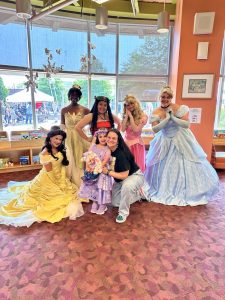
Pursuit for Peace organization partners with Dover Comic-Con. My daughter and myself with some of the princesses.
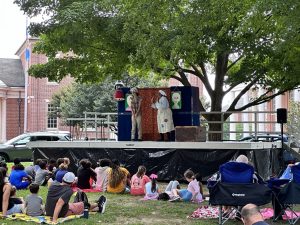
Outreach Summer Program with Rehoboth Beach Children’s Theater and Dover Library. I do a summer program called “Tuesdays in the Park” where we work with local businesses to put on performances for children. We are also able to provide free lunch to patrons.

Dover Library partners with the City of Dover to offer Little Free Libraries in Public Parks. I manage 2 Little Free Libraries. This helps get free books into our communities.
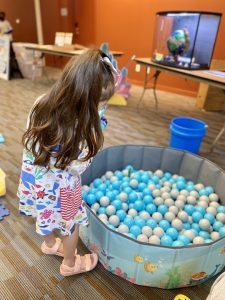
Dover Library partnership with Engineer Early, a non-profit family run organization that strives to incorporate STEM into early childhood learning. I partner with Engineer Early around 4 times a year (once a quarter). We also have a tween-teen program where they teach children how to code and create 3D printed images.
Renovated Spaces
In 2023, I attended the annual MLA/DLA Library Conference. I was originally hired into my role as the Tween (ages 8-12) Program specialist. At the conference, there was a session on Tween Programs and Tween Spaces. Although this program was short, I learned a lot of important information from it.
The librarian that was running the information session expressed the importance of making sure that teens and tweens have a place where they feel safe and comfortable to be themselves. This prompted conversations between my supervisor and myself about how we can make the space more tween friendly. We implemented a few ideas such as tween only seating and teen only teen space. We have noticed increased circulation and foot traffic since these changes have been made.
We (the director and youth services staff) are also currently working on moving our media lab into a larger space. The media lab currently can hold 2 people with a reservation. The new space is in a more accessible location and can hold up to 6 people. We discussed the importance of having a working space for groups which unfortunately we cannot currently offer. We have study rooms but they are silent as the noise within the rooms travel. Other than the 2 study rooms, we do not offer public collaborative spaces. We hope to have completed the renovation project by Spring 2025.
Art Display
I also find it important that art displays are important for Hyperlinked Communities. Looking back at previous modules, the art display in a library really ties into the participatory model of libraries. I personally want to encourage creativity in everyone who walks through the library doors. By creating open ended prompts for art displays, you receive so many pieces that are all unique but alike in a way. It is really a great experience seeing children come into the library with their parents to show them the artwork that they made hung up on the walls. It gives them a sense of belonging in their local libraries and I think this is so important in Hyperlinked Communities.
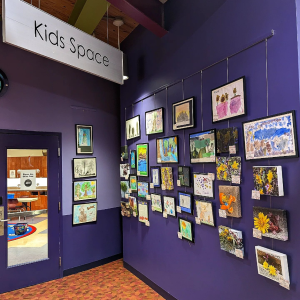
Our Fall 2023 display featured nature in art. I collaborated with a local Charter school (K-8th) and patrons to create this display.
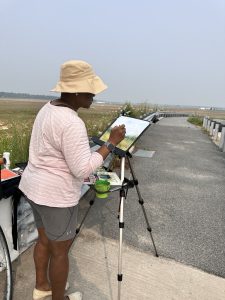
This is a photo of Winifred Way, a local artist in our community. She works with the library and local artists in order to promote and sell their art. This photo is when I was on a walk in the summer and I found her painting above an overpass. It always makes me smile.
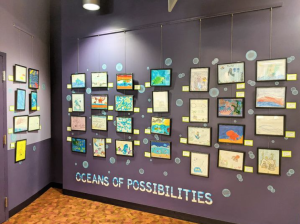
This is the first time we did an art wall, summer of 2022. We gave the children a theme (“Oceans of Possibilities”) and they really went for it. It was a great way to have patron buy in during our summer reading program.
Teen Resource Center
Before I worked at the library, I was a teacher in a middle school. Something interesting that I saw when I started teaching was the idea of a hygiene closet. In an effort to provide some hygienic items to students, I raised money through Go Fund Me and was able to buy around $300 in hygiene items for students. The closet was used discreetly and didn’t require names to be shared. Students could go in there while they were at lunch or special. I was aware of who was using it but ensured that their privacy would be protected. Reading the article by Tareq Hasan, one key point that sticks out to me and is applicable in this instance is “Most people who are facing mental health-related problems… feel loneliness and they don’t find anyone who they can trust” (Hasan, 2023). These teens and middle schoolers feel safe to take these items because they are in a judgment free zone.
When I came to the library, I thought that it would be a great idea to implement in our library. With a little more crowdsourcing (my friends and family are amazing) I was able to raise around $275 to begin our teen resource center. Since teens and middle schoolers have different needs, I worked with another teen library assistant to pick items that would meet the needs of our teens. We included basic hygiene items such as toothbrush/paste, shampoo, tampons/pads, lotion, floss, hair ties, etc. but we also included items such as male and female condoms as well as different resources for help with addiction, alcohol, and teen pregnancy.
We constantly restock the items although we don’t necessarily see teens going through the items. We have received compliment cards thanking the teen staff for providing these resources.
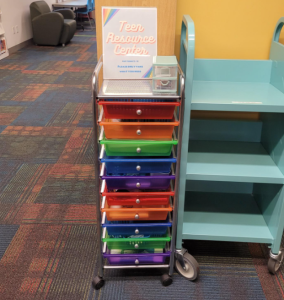
This is our small but mighty resource center. Each drawer is organized with different items. We restock it regularly.
In conclusion…
I was happy to see how much my library does in terms of inclusive services. I think that hyperlinked communities build rapport and real connections with people. By offering participatory services, we are better serving our communities and ourselves.
References:
Hasan, T. (2023, June 27). “free, non-judgemental, accessible”: How your local library is a sanctuary of health and Wellness. SBS Bangla. https://www.sbs.com.au/language/bangla/en/article/free-nonjudgmental-and-accessible-how-your-local-library-is-a-sanctuary-of-health-and-wellness/t15blzsi9
Assignment X: Participatory Services

For Assignment X, I decided to focus on Participatory Services. According to Linh Nguyen, a faculty member of Science and Engineering, “a participatory library is one that fosters community among the users, librarians, and broader society” (Nguyen, 2015). I feel that I somewhat have an advantage in understanding participatory services as I currently work in a library that is very user friendly. I work in the children’s space and we are constantly striving to build a better community and take all feedback for programs and events. After looking through the various articles for the week and listening to Professor Stephens lecture, I have come to have a better understanding of how libraries can implement participatory services. Participatory libraries focus on the users and how they access services, adapting to the needs of the users, and building a community around the users.
First and foremost, a participatory library focuses on the users of the libraries and how they access these services. Essentially, this means that librarians and their libraries are focused on designing programs and activities around the people that will benefit from them. They focus on understanding what the user needs by implementing different tools for feedback. In my library, we use tools such as annual surveys, after program surveys, and polls on social media. I am currently on the Strategic Planning Committee where we make decisions based on used feedback. The annual survey asks questions to the user about their experiences in the library and we create goals surrounding community needs and develop an action plan to meet these goals. We collect the data into a spreadsheet and use this data to guide our decisions in the following fiscal year. We ask questions about programs, collections, and patron experiences. Our 2021-2023 goal was to increase outreach, have a more diverse collection, more diverse programming, and improved customer services. Based on our outreach events, collections, programming, and survey results surrounding customer satisfaction, we achieved all of these goals for the 2021-2023 strategic plan.
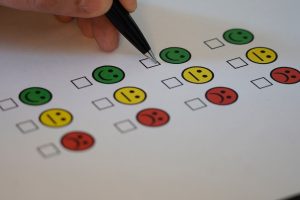
The next thing that a participatory library focuses on is increasing accessibility and inclusive services within the library and the digital world. Throughout the readings, I noticed a common theme. All libraries that are participatory are using social media services and other technologically advanced tools in order to connect with users. In the Tame the Web article, guest Michael Casey states that “the participatory library is open and transparent, and it communicates with its community through many mechanisms” (Casey, 2011). I do believe that since it has been 10+ years since this article was published, we have made great strides in technology as far as use in libraries is concerned. Again, I am relating the use of social media to the library that I work in. My supervisor, Rosie, runs our social media pages. She posts surveys and polls in relation to our events. She creates events where people can RSVP whether they are showing up digitally or in person. We have also gone live on Facebook for in person events before which users have expressed gratitude for when they were unable to leave the house. Outside of social media, we also respond to reference requests digitally if users opt to use our “Ask a Librarian” page. We also understand that not all patrons have access to the internet so we provide hotspots for home use as well. We are able to provide services to people without the expectation of them walking through our doors. We are able to meet the needs of users throughout the state by offering digital services.
Lastly, a participatory library adapts to the needs of its users as well as building a community around these users. For me personally, I run an abundance of programs in order to meet the needs of many different library users in my community. I have 3 tween (ages 8-12) programs a month, 2 family programs a month, 2 homeschooler (ages 6-18) programs a month, 1 all ages program a month, and 1 program a month for adults with disabilities. These are my programs between September-May. In the summer, I offer more programs but am going to focus on these. When I began at my library, none of these programs existed. I, in a way, built them from the ground up. The first program that I created was a program for tweens. After about 2 months of this program, the feedback that I received was that we needed more programs for families. We have a lot of programs that are designed for babies and toddlers but these occur during the day. Families who have children between the ages of 4-7 were not able to access programs in our library after school.

After I began to implement family programs, patrons that did not have children felt comfortable telling me that they liked the idea of my programs but were unable to access this. Thus, all age programming was born. Once all age programming came to be, there were many homeschool families who naturally attended and also expressed interest in building a homeschool cohort. I told them that I would work with them to see what I could do and the homeschool program was born. From January 2024-May 2024 I ran 1 program a month. By the summer, we realized that the 50+ people in attendance one time a month was simply not enough to meet the needs and therefore we decided a bi-weekly program would satisfy the user’s needs. Lastly, my adults with disabilities program was born when an adult patron with an adult disabled son expressed her interest in programs that would meet his needs. It took me about 6 months to set it into motion but in December 2024, the program will have been running for 1 year.
Outside of programming, we also have dedicated spaces for users in our library. We have a dedicated teen space, children’s space, and adult space. We have policies in place to enforce age limits in order to ensure that teens and children are able to use the space as intended. In the article “Embracing Service to Teens”, the author acknowledges that teens need a space where they feel welcome and comfortable to be themselves (Casey, 2008).
To conclude, participatory services transform how libraries serve patrons. By making sure that users are included in decision making and services, librarians are creating more inclusive spaces and relevant programs. By doing this, they are able to meet the needs of the users in the community and ensure satisfaction for years to come.
References:
Casey, M. (2011, October 20). Revisiting participatory service in trying times: A TTW guest post by Michael Casey. Tame the Web. https://tametheweb.com/2011/10/20/revisiting-participatory-service-in-trying-times-a-ttw-guest-post-by-michael-casey/
Casey, M. (2008, May 15). Embracing service to teens. Tame the Web. https://tametheweb.com/2008/05/15/embracing-service-to-teens/
Nguyen, L. C. (2015, April 30). Establishing a participatory library model: A grounded theory study. The Journal of Academic Librarianship. https://www.sciencedirect.com/science/article/abs/pii/S0099133315000592#:~:text=A%20participatory%20library%20is%20one,%2C%20librarians%2C%20and%20broader%20society
Introduction Post
Hello all!
My name is Carlee and I currently work as a Youth Services Library assistant in Delaware. Before I worked at the library, I was a teacher for six years. I am passionate about educating our youth and think that it is so important for people to understand what libraries provide. In the last ten years, I know that technology has changed how we access things in a significant way. When I left teaching, I knew that I wanted to continue to educate but felt that the traditional education setting was not for me. I was hired here shortly after I left teaching and have no regrets. I mainly coordinate programs for tweens but also host family nights and events for school aged children. I work closely with small businesses and museums as well to facilitate homeschool programs and other various events.
I am very interested in art and fashion. One of my favorite things to do is listen to music or read books. I am currently reading “How to Sell a Haunted House” by Grady Hendrix as well as “Tomorrow, and Tomorrow, and Tomorrow” by Gabrielle Zevin. My favorite author is, like many people, Stephen King, more specifically 11/22/63. I like listening to music on vinyl, cassette, or CDs. I have really started to collect physical media in the last year or so in hopes of having a great collection when I am older. The hope is that I can pass it down to my music loving daughter. With these interests, I hope to one day work in an archive or museum which focuses on the arts. I think that art is so beautiful and subjective and would love to have a part in the preservation of it.
I am about halfway through my MLIS program and am projected to graduate in Fall of 2025. With that being said, I am happy to be here and excited to learn more about the use of technology within our library systems and how it can benefit the library user.
